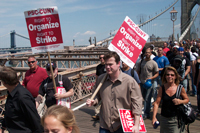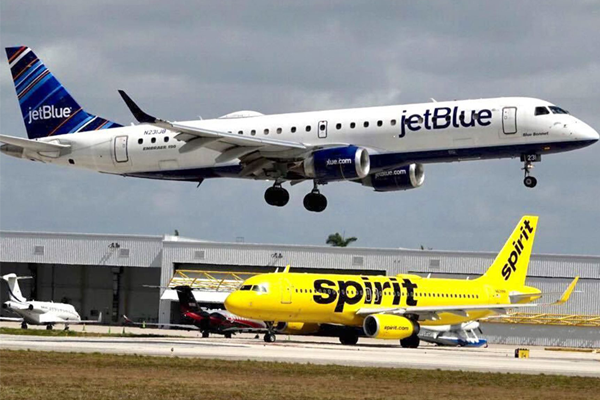June 20, 2011
By Stephanie West
Union workers stopped traffic on Broadway June 15, waving American flags and picket signs as police struggled to clear a path for taxis and MTA buses.
Workers clambered up scaffolding to hang a banner for Ironworkers Local 361 over the street, just across from City Hall. When police set up crowd barriers at the intersection of Broadway and Chambers Street, the crowd spilled into the next intersection.
It was just the final act of a massive demonstration. Thousands of union members gathered earlier that day for a “March for the Middle Class!” starting in Brooklyn, crossing the Brooklyn Bridge and finishing next the City Hall in Manhattan. The New York City Central Labor Council organized the march, joined by public sector and private sector union leaders to stop what picket signs called the “War on Workers.”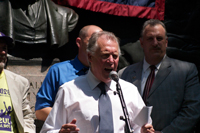
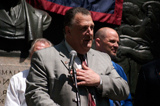 “Every policy decision since this downturn began has been directed against the Middle Class,” said Dennis Hughes, President of the New York State AFL-CIO at a rally held before the march in Brooklyn’s Cadman Plaza, at the foot of the bridge. “We have been asked to give up our ambitions and our ambitions for our children for a tax cut.”
“Every policy decision since this downturn began has been directed against the Middle Class,” said Dennis Hughes, President of the New York State AFL-CIO at a rally held before the march in Brooklyn’s Cadman Plaza, at the foot of the bridge. “We have been asked to give up our ambitions and our ambitions for our children for a tax cut.”
To fight back, building trades unions are standing firm with public sector unions. “The middle class is under attack in every sector, public and private,” said Gary LaBarbera, President of the Building and Construction Trades Council of Greater New York.
“They think we should be thankful that they let us work — they should be thankful for our work,” said United Federation of Teachers President Michael Mulgrew, who also attended the rally.
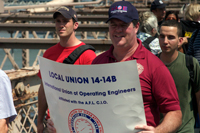 The marchers filled the Brooklyn Bridge, so that as the first marchers stepped off the Bridge in Manhattan, union demonstrators were still entering the Bridge in Brooklyn.
The marchers filled the Brooklyn Bridge, so that as the first marchers stepped off the Bridge in Manhattan, union demonstrators were still entering the Bridge in Brooklyn.